Opera, Opera, everywhere
Opera have had a concerted effort to place their Web browser on _everything_, most recently, with AJAX support on digitalTV.
Nintendo have made an interesting move here. The DS has always been focused on providing gaming, so to take the jump to making it a Web-access device is significant.
Those interested in running it will need to buy a Opera on a DS card and they’ll be away – browsing over Wifi on the dual screens.
GIVING GAMERS TWO WINDOWS TO THE WEB: THE OPERA BROWSER FOR NINTENDO DS
February 15, 2006: Opera Software today announced that it will deliver the World Wide Web to Nintendo DS users in Japan. In Opera’s agreement with Nintendo, Nintendo DS users will now be able to surf the full Internet from their systems using the Opera browser. The Opera browser for Nintendo DS will be sold as a DS card. Users simply insert the card into the Wi-Fi enabled Nintendo DS, connect to a network, and begin browsing on two screens.
Earlier this year, Nintendo reported that 13 million Nintendo DS systems were sold to consumers around the world within just 13 months of its debut in November 2004. Nintendo DS combines unique dual screens, touch screen, voice recognition and wireless and Wi-Fi communications capabilities. According to an independent market research company in Japan, Nintendo DS has become the fastest selling video games machine to top the 6 million sales mark in Japan in just over 14 months since its Japanese debut, breaking the old record held by Nintendo’s Game Boy Advance.
“The incredibly popular Nintendo DS is already Wi-Fi enabled to support real?time gaming, so adding Web browsing capabilities was a natural evolution for this device,” says Scott Hedrick, Executive Vice President, Opera Software. “Gaming devices are growing more advanced and a great Web experience is becoming a product differentiator for gaming manufacturers. Opera is excited to work with Nintendo to deliver a unique dual screen, full Internet experience on Nintendo DS.”
With an on?screen keypad and stylus, users can easily navigate the Web from their Nintendo DS with PDA?like functionality. Based on the same core as the Opera desktop browser, Opera delivers superior speed and rendering of Web pages on the Nintendo DS.
“Within just five seconds of turning on the system, the Nintendo DS is already fully operational. This makes it the ideal device to enable people to swiftly obtain the latest information from the internet, wherever they are,” says Masaru Shimomura, Deputy General Manager of Nintendo’s R & D Department. “Opera exceeded our expectations with its user friendly interface, quick access to all your favorite sites, ease of use and, most importantly, in making the best use of the Nintendo DS system’s unique double screens and touch screen features. Opera is an important partner for Nintendo in our efforts to further expand the users of the Nintendo DS.”>Nintendo Co., Ltd. held a presentation today in Tokyo, Japan, to announce updates for the Nintendo DS. Information on the availability of the Opera browser DS card has not yet been announced.
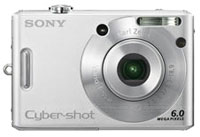 Ahead of the big PMA (Photo Marketing Association International) show at the end of the month in Florida, Sony has announced two new 6-megapixel cameras in their ‘W’ range.
Ahead of the big PMA (Photo Marketing Association International) show at the end of the month in Florida, Sony has announced two new 6-megapixel cameras in their ‘W’ range.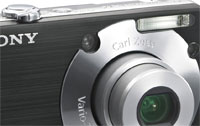 Looking somewhat reminiscent of the Canon Ixus / Elph range, the miniaturised, re-engineered W-series offers a compact, highly pocketable design (89x59x23mm) with a price that’s easy on the pocket too, with the DSC-W30 retailing for $230 (~£132, ~e193) and the DSC-W50 for $250 (~£143, ~e209).
Looking somewhat reminiscent of the Canon Ixus / Elph range, the miniaturised, re-engineered W-series offers a compact, highly pocketable design (89x59x23mm) with a price that’s easy on the pocket too, with the DSC-W30 retailing for $230 (~£132, ~e193) and the DSC-W50 for $250 (~£143, ~e209).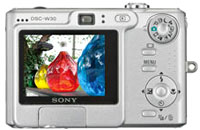 At higher ISO ratings noise can become a real issue, but Sony are claiming that their Clear RAW imaging technology keeps the multi-colour snow-storm effect to a minimum.
At higher ISO ratings noise can become a real issue, but Sony are claiming that their Clear RAW imaging technology keeps the multi-colour snow-storm effect to a minimum.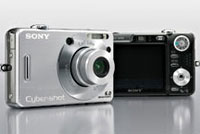 To help fumbling newbies and the easily baffled, Sony has added a new function guide which displays a short onscreen text explanation whenever a shooting mode is selected. This can be turned off once the user becomes familiar with the icons on the mode dial.
To help fumbling newbies and the easily baffled, Sony has added a new function guide which displays a short onscreen text explanation whenever a shooting mode is selected. This can be turned off once the user becomes familiar with the icons on the mode dial.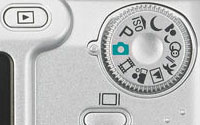 Scene modes Twilight, Twilight Portrait,Landscape,Beach,Snow,Soft Snap
Scene modes Twilight, Twilight Portrait,Landscape,Beach,Snow,Soft Snap For the second time in a fortnight, coastguards have been scrambled after a digital TV box sent out a signal on a wavelength used by ships in distress.
For the second time in a fortnight, coastguards have been scrambled after a digital TV box sent out a signal on a wavelength used by ships in distress.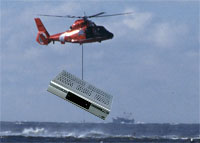 An Ofcom spokesman explained that the faulty boxes are now being examined for malfunctioning components, adding: “Apparently any device capable of receiving a signal can also send a signal if it malfunctions. To the best of our knowledge these are the only two out of millions of Freeview users in the UK to have experienced this problem.”
An Ofcom spokesman explained that the faulty boxes are now being examined for malfunctioning components, adding: “Apparently any device capable of receiving a signal can also send a signal if it malfunctions. To the best of our knowledge these are the only two out of millions of Freeview users in the UK to have experienced this problem.”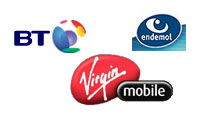 They’ve been busy boys at BT this week, with the UK telecoms giant making two major announcements.
They’ve been busy boys at BT this week, with the UK telecoms giant making two major announcements.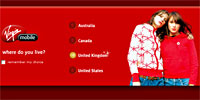 Using the UK’s existing digital audio broadcasting (DAB) network, the broadcast service will be offered on a limited exclusive basis to virgin Mobile customers later this year. BT Movio will be available in the future to all mobile operators in the UK.
Using the UK’s existing digital audio broadcasting (DAB) network, the broadcast service will be offered on a limited exclusive basis to virgin Mobile customers later this year. BT Movio will be available in the future to all mobile operators in the UK.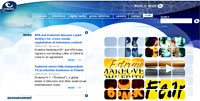 Microsoft partnership
Microsoft partnership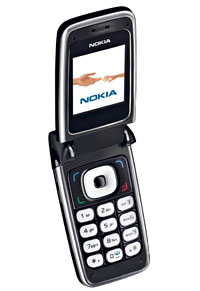 Launched at the 3GSM World Congress in Barcelona, Nokia’s new 6136 phone is being touted as the handset that brings GSM and wireless LANs together.
Launched at the 3GSM World Congress in Barcelona, Nokia’s new 6136 phone is being touted as the handset that brings GSM and wireless LANs together.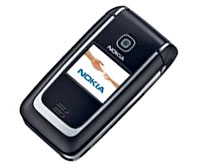 The quad-band Nokia 6136 will be able to connect to GSM networks at 850, 900, 1800, and 1900MHz (so no problems using it in the States as well as Europe) and comes with a built in 1.3 megapixel camera and FM radio.
The quad-band Nokia 6136 will be able to connect to GSM networks at 850, 900, 1800, and 1900MHz (so no problems using it in the States as well as Europe) and comes with a built in 1.3 megapixel camera and FM radio.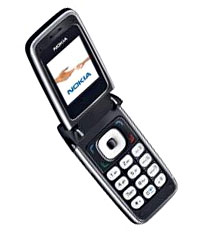 At a press conference on Monday, Jorma Ollila, Nokia’s chief executive said, “We want to help our customers complement their existing mobile services with mobile IP. UMA gives users an alternative to PC-based VoIP,”
At a press conference on Monday, Jorma Ollila, Nokia’s chief executive said, “We want to help our customers complement their existing mobile services with mobile IP. UMA gives users an alternative to PC-based VoIP,” Anyone who’s anyone in the 3GSM world will be hot footing it to the 3GSM World Congress in Barcelona, which starts tomorrow.
Anyone who’s anyone in the 3GSM world will be hot footing it to the 3GSM World Congress in Barcelona, which starts tomorrow. The mobile phone industry is desperate to come up with mass market services to entice consumers to use 3G networks, but they’ve got their work cut out, with a recent survey finding that almost 80 per cent of UK users said that mobile services are getting too complicated.
The mobile phone industry is desperate to come up with mass market services to entice consumers to use 3G networks, but they’ve got their work cut out, with a recent survey finding that almost 80 per cent of UK users said that mobile services are getting too complicated. BT are also going to be at the show and are expected to launch their new broadcast digital TV to mobile service,
BT are also going to be at the show and are expected to launch their new broadcast digital TV to mobile service, 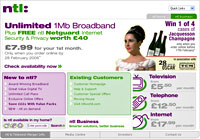 Major UK consumer broadband providers NTL are teaming up with BitTorrent, the developers of the world’s most popular peer-to-peer (P2P) application.
Major UK consumer broadband providers NTL are teaming up with BitTorrent, the developers of the world’s most popular peer-to-peer (P2P) application.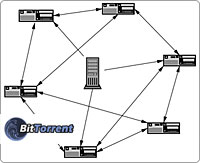 Naturally, rights holders and movie heavyweights weren’t too chuffed to see their content whizzing around the Internet for gratis, and quickly hired in squadrons of lawyers to apply pressure on BitTorrent.
Naturally, rights holders and movie heavyweights weren’t too chuffed to see their content whizzing around the Internet for gratis, and quickly hired in squadrons of lawyers to apply pressure on BitTorrent.